Patrick’s Top Ten of 2012
First, eligibility issues. I live in West Virginia, where we are lucky to get any of the cream of the crop within the calendar year it was released.
However, my rules for top 10 lists have traditionally included any film which had its first American theatrical run during that calendar year. This means that many of the films on my lists may have premiered at festivals or in their native countries in previous years.
10. Ted
Once when I worked in the sports ticketing industry I spoke with a Catholic priest from New Jersey who had purchased tickets to a New Jersey Devils hockey game. When I asked him why a man of the cloth would go to support such a demonically named team, the father said to me: “From time to time, we must admire even devils.”
This sentiment typifies my relationship with Seth McFarland. I have consistently found his library of programs on FOX Television to be crass, uncreative, and often racist portrayals of humor without consequence.
However, every once in a while, McFarland hits a joke so perfectly, with such cultural precision that it becomes impossible not to respond.
This was the case with Ted the debut film from Academy Award nominee Seth McFarland. One of the year’s most misunderstood films, Ted shows how making ever the slightest change to a formula can make all the difference. Taking his patented recipe of hollow cultural references, nihilistic humor, and button-pushing ethnic humor, McFarland has added something deeply surprising to the formula – sincerity. Superficially, the jokes themselves remain as vapid and soulless as any episode of Family Guy.
However, this apparently bottomless pit of soulless comedy acts merely as subterfuge for the relationship between John and Ted. The addition of Mark Wahlberg into the McFarland universe as John gives the film just enough pathos to reveal fleeting moments of humanity amid the barrage of Flash Gordon and TJ Hooker references. Wahlberg’s chemistry with everyone on screen including the meticulously computer animated title doll manages to let the audience laugh with its characters instead of at them.
McFarland, who seems to have a deep attachment to the lush aesthetic of 1980s-era Woody Allen, turns his usual parade of GenX fetish totems into a joyous and delightful romp. In Ted McFarland has created an elegiac return to form, a trashy yet inexplicably winning portrait of the clueless naiveté of the fading New England middle class. Is it clever? No. Is it classy? No. Is it charming? I think so, and in a year that has most critics extolling the virtues of the idiosyncratic simulacra of Wes Anderson and Quintin Tarantino, it stands to reason that we should from time to time admire even a devil like Seth McFarland.
9. Bernie
Two decades after Slacker and Richard Linklater is still surprising me. Bernie is an honest, clever and delightful portrayal southern church culture. While the film benefits from the cultural specificity of Southeastern Texas Methodism, Bernie ferrets out truths about small town America that should resonate with anyone whose ever struggled with the opposing forces of unconditional love and spiteful paranoia that often typify religious communities.
So strong and strangely charismatic is Jack Black’s titular performance that it carries the viewer through a difficult and perplexing framing device. Linklater juxtaposes Bernie’s narrative with Christopher Guest-esque interviews with actual townsfolk from Carthage, TX. Initially this technique feels like an almost insurmountable obstacle for entry into the film’s world. It isn’t until the film’s chilling third act that these interviews come together to reveal the cognitive dissonance between the unconditional love of a community for its most revered member and the cold reality of his actions.
8. Zero Dark Thirty
The relationship with most viewers and Zero Dark Thirty is going to be complicated. There’s no getting around the opening 40 minutes of “enhanced interrogation techniques.” The film never gives us a clear emotional entry point into the story its telling. he action set pieces which typified Katherine Bigelow’s previous films have been stripped away and replaced by quiet procedure and understated focus and intensity. The cumulative effect of this approach is similar to the best of long-form journalism. For the second time, Bigelow and screenwriter/producer Mark Boal have built a piece of vital cinematic investigative journalism, bringing to light astonishing facts that invite but never explicitly offer commentary. Like a midnight train, it just keeps moving forward, methodical, slow, forward momentum, building to a satisfying yet somber conclusion. Maybe no 2012 film is helped more by its final haunting image in solidifying its impact as Zero Dark Thirty.
7. Beyond The Black Rainbow
After a while, its easy for any film critic to become jaded and self-aware of even the most masterfully crafted film’s machinations and film-grammar underpinning. That’s what makes a film like Panos Costimos’s enigmatic Beyond The Black Rainbow so miraculous and elusive. It is a film that cannot so much be understood as experienced. Dealing in nightmare imagery, histrionic performances, and the loosest of Platonic narratives, Beyond The Black Rainbow, was one of the only films that succeeded in bypassing the film analyst part of my brain and entered directly into subconscious. The definitive midnight movie of 2012, it has drawn comparisons to the work of David Lynch, Nick Roag, and David Lynch.
However, Panos Costimos dystopian vision of what appears to be a meditation-colony-turned-psychotic-Ikea-sex-prison are immediately singular and not derivative. Not since Michelangelo Antonioni has a filmmaker’s work so perplexed and stumped my formidable grasp of film language.
What I do understand of the film is that it exists as a film of consciousness. The film seems to be lucid, sentient, aware of the person watching it, like Nitzche looking on to the void. Where many films offer the audience monsters, Beyond The Black Rainbow becomes the monster itself. Beyond The Black Rainbow exists as a dark and troubling consciousness capable of hunting down its audience and defeating them. Beyond The Black Rainbow is the manifestation of the void looking back.
6. Django Unchained
Having never been a fan of Quintin Tarantino before, I’ve found his filmmaking ticks to be utterly frustrating and distracting. However, with Django Unchained everything just clicked, and I found myself utterly enchanted by Tarantino’s revisionist view of slavery era Mississippi. By placing his narrative prior to the creation of motion picture, Tarantino has forced himself to move beyond his normal litany of television and film references and has replaced them with of all things – German Opera. Less a pastiche of genre conventions than an interrogation of them, Tarantino uses his gift for sparkling, biting dialogue and stylistic violence to paint a transgressive and unflinching look at the cruelty of slavery. By doing this against the backdrop of Blaxploitation and western genre norms, Tarantino is able to use the film as a piece of psychic empowerment for the most powerless of characters and turns the classic Hollywood trope of the mystical negro on its head. Whereas Tarantino’s mash-ups seemed to be previously acting as film-nerd fetish items, “Django Unchained” has some real meat on its bones and a final act that is as confrontational a statement on race as anything from Spike Lee’s back catalog.
5. The Master
Paul Thomas Anderson’s The Master is a movie that is less interesting in and of itself as in the film happening outside of the frames we see. It is a fascinating, unsettling perverse and often baffling window into a world that we as the audience may never understand. The question then becomes, is the experience of being in that world rich enough to justify the experience of watching it. Whether it be in the portrayal of the inability of two men to connect with each other, its portrayal of psychic displacement in Post-War America, or its interrogation of traditional psychosexual gender roles, The Master consistently answers ‘yes.” It’s another classic example as a film as having consciousness where the film seems to be directing the director and not the other way round. Its singular, infuriating, and each repeat viewing raises new and troubling questions. Paul Thomas Anderson must be credited with giving an entire generation of academics new fields to plow in Film Studies, as he slowly surpasses David Lynch for the title of Hollywood’s most enigmatic auteur.
4. Rust And Bone
If someone were to describe the plot of Jaques Audiard’s drama Rust And Bone, it would feel like the result of a bizarre film parlor game gone horribly wrong. Remarkably however, in the hands of the French modern master Audiard, a preposterous plot is turned poignant and emotionally rich by steady understated direction and the year’s two best performances: Marion Cotillard, Matthias Schoenaerts. Easily the best romantic pairing of the year, the film gets by in most part on the startling shifts between extreme moments of tenderness and rage. One of the year’s best uses of music is the inexplicably touching use of Katy Perry’s “Firework.” The film also boasts my favorite image of the year in film, one that reinforces the films themes of the struggle between the goodness of man and the violence of nature.
3. Attenberg
Tragically buried in release in early 2012, Attenberg is the most delicate of creations. This lost gem from the emerging “new wave” of Greek films has become my Platonic ideal of what independent an international film can be. Completely void of any non-diegetic sound, this intimate, minimalist portrayal of sex, death allows the audience to connect with its characters lonely isolation and emotional atrophy on a purely visceral level. While never addressing the current financial state of Greece, Attenberg may serve as a bell-weather for the sense of impending doom and the struggle for survival boiled down to its most barest of realities, the promise of death and the implied genetic mandate for fornication.
2. The Hunger Games
Bertol Brecht once argued that art should not be as much a mirror to the world around us as a hammer with which to shape it. In 2012 no film better married the high aspiration of proletarian revolt and the entertaining high stakes drama of popcorn cinema more than The Hunger Games. Too incendiary to be dismissed as a mere blockbuster and too artful and engaging to qualify as pure propaganda, The Hunger Games does not as much create a dystopian future fantasy world as reveal its existence. The rare blockbuster that actually benefits from handheld cinematography, The Hunger Games points its lens at an impoverished exploited rural District 12 which seems to ape so called “poverty porn” images of Appalachia and then juxtaposes them with obscene caricatures of wealth and power. In doing so Gary Ross has done what not even Sergi Eisenstein could do: create a female working class folk hero, in Katness Everdeen. Very rarely do we get films with such effective allegorical power that neither the message or the entertainment get lost in the process. Its a testament to the creative team and novelist Suzanne Collins for making such a disturbing story resonate with such a large swath of individuals. In Katness, a new generation has an icon of quiet rebellion against a system that no longer has their best interests at heart.
1. Lincoln
Good films can often show a particular artist’s vision at its most vivid or vibrant. The truly great films, the masterpieces of which there are only a handful every decade, seem to manifest themselves with artistic mastery that surpass the intent, vision, or machinations of a specific auteur or artist. In Lincoln, Spielberg has brought to screen the most disciplined, thoughtful, and cinematically-realized film of his career. A film that seems to have been birthed more than created, Lincoln sees the promise of the Stephen Spielberg/Tony Kushner collaboration first offered up in 2005’s Munich pay off in spades. The resulting film manages the feat of connecting the audience to the life and world of a time character so familiar that he had become impossible to imagine as a real person.
Lincoln invites every complaint about large, epic “Oscar Bait” movies and then systematically dispatches them with scene after scene of vibrant dialogue, career best performances, breathtaking and transportive cinematography, and meticulous attention to detail. Janusz Kaminski’s long, almost theatrical unbroken takes puts the audience face to face with history not as a sterile museum but as an immediate reality. Kushner’s words in the mouth of a cast of thousands (Kevin Kline is 74th billed) gives voice to the big ideas at work while also proving astonishingly witty and funny. In Daniel Day-Lewis, both the actor and the American president he portrays are liberated from the shackles of their own sainthood, giving way to complicated, flawed and recognizable humans. In so doing, Lincoln reveals uncomfortable truths about our current political reality. As he did with Schindler’s List and Saving Private Ryan Spielberg has given generations separated by time an emotional entry point into our collective past. It will forever shape how America views this critical moment in history. It is history etched with lightning.
Honorable Mentions: Holy Motors, Argo, Haywire, Beasts Of The Southern Wild, Sound Of My Voice, Searching For Sugar Man, Skyfall, Samsara
Did Not See: Life Of Pi, Silver Linings Playbook, Amour, The Turin Horse, Atlas Shrugged Part II













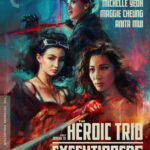




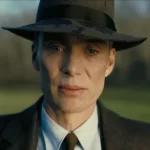



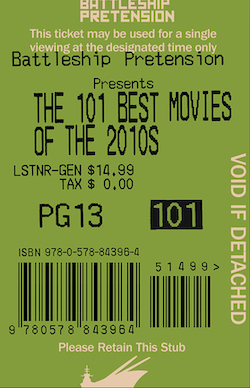




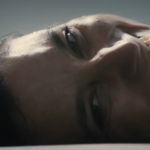


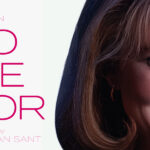




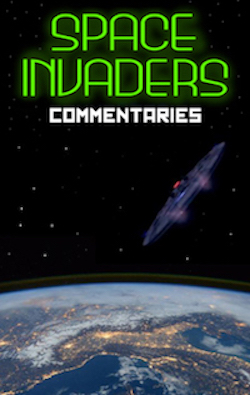
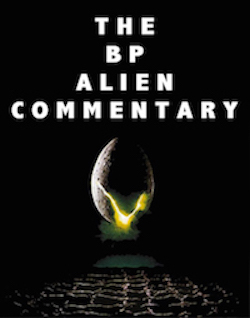
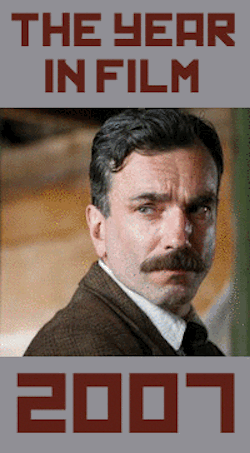
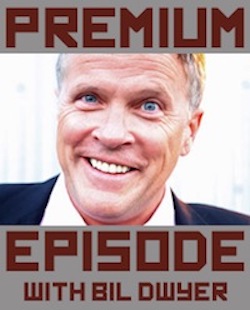

Saved by Brecht 😉